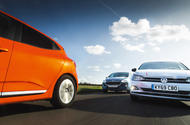“You could make a convincing case that any one of the three should be our ultimate winner”
We’ve winnowed it down to the Renault Clio, Ford Fiesta and Volkswagen Polo – but only one of these can come out on top
In our search for Britain’s best small car 2020, we’ve already picked a shortlist from our initial selection of nine models. You can read about that task here, or read on for the final three.
The truth is, there isn’t only one outstanding small car in this group; there are three of them (if you’ll allow the slightly contradictory waft of that suggestion). The Renault Clio, Ford Fiesta and Volkswagen Polo make up a triumvirate of strength so readily apparent that there could be little doubt, in the end, about which cars should make up this top-three showdown. That can only be fantastic news for the European motoring public, because between them these three will drive up class standards in a way that’s likely to make your next new small car better whichever one it happens to be.
You could make a pretty convincing case that any one of them should be our ultimate winner. In fact, why don’t I give it a try? Then you can simply decide which argument you like the sound of best.
Among the new Renault Clio’s lures are its handsome styling, its smart and nicely laid-out cabin and its natural-feeling, intuitive handling – but chief among them is actually value for money, which is a selling point so many European supermini makers seem increasingly uninterested in. This isn’t quite the cheapest car in the whole field but, when you weigh all of its qualities against what it costs (it’s the only car in our top three that can be bought for less than £15,000 at its manufacturer’s suggested retail price), you’ll soon appreciate that it’s a bit of a bargain. Yes, MSRP is only a guide to what you might actually pay for one of these cars, and not a great guide at that, but it’s what we’ve got. Brand-new superminis aren’t normally so competitively priced.
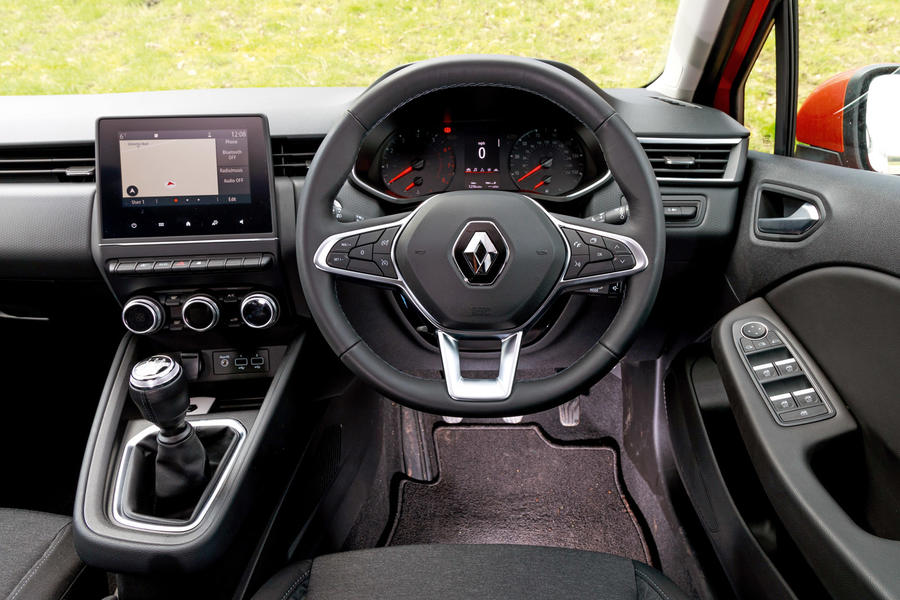
There is a likeable sense of simplicity and understatement about the Clio’s interior, which distinguishes itself with an abiding and consistent level of perceived quality that’s a little above average for the class. Even more powerfully, though, it does so with a first-class ergonomic layout and a very fine driving position. You don’t normally get to sit so low and straight-legged in a packaging-conscious small hatchback, with such a well-located and perfectly proportioned steering wheel, well-set pedals and a high-rising and convenient gearlever, with your elbow and other contact points so ideally supported.
The car’s instruments are simple and clear. Its touchscreen infotainment system is not as large or graphically appealing as some but is intuitive enough to use so as not to be distracting. Moreover, almost every important switch and button around the cabin has been moved from the funny old locations in which Renault used to hide them to new ones right where you expect them to be. The cruise control toggle isn’t on the centre console any more but up on the steering wheel spoke. There are big, smart-looking, easily grabbed ventilation controls and chrome-finished window switches to match, both of which inject a bit of classy lustre. It’s very much as if Renault has finally found an accurate French translation for feng shui.
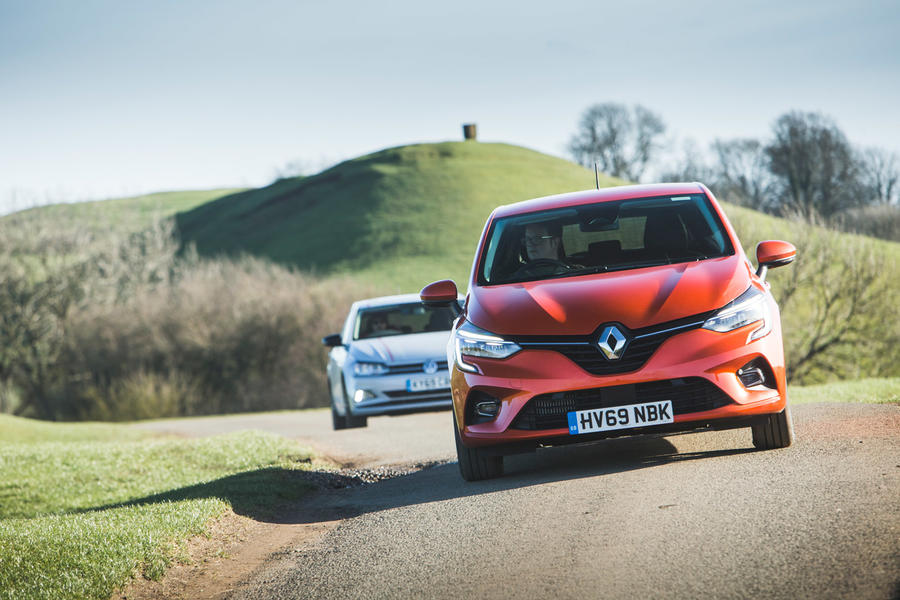
On the road the Clio impresses with precise, perfectly paced steering. There’s also good drivability from a turbocharged engine that has more than adequate accessible torque, albeit perhaps less of it than rivals and with only a five-speed gearbox to channel it through. Mechanical refinement is surprisingly well-suppressed, too (although the sometimes slightly noisy, occasionally uppity ride takes the edge off that), and there’s an abiding sense of intuitiveness in its general operation. It could be quicker, more fluent in its ride and bigger in the back, granted. But for what it costs, it’s got a hell of a lot going for it.
The Polo, of course, might have even more strengths on which to draw. It’ll come as no surprise to long-time readers that we’re praising its merits now; that a Polo will provide comfortable, practical, solidly built family transport remains as dependable as bad weather on a British bank holiday. Well, this one rises unassumingly above the standards of other small cars with its interior roominess, its well-rounded comfort and civility, its easy drivability, its perceived quality and infotainment sophistication and more. The Polo is, in short, now a fully fledged downsized Golf-a-like in that you could give it at least eight and a half out of 10 for anything.
Polos have also tended to come at a slight premium over the supermini class’s going rate – but not so much our test car. VW’s Beats specification addresses the car’s two biggest potential weaknesses by filtering in some extra material colour and vivacity into the cabin, rendering it less serious in its ambience, and also bundling together most of the equipment you might want, all for a pretty reasonable price.
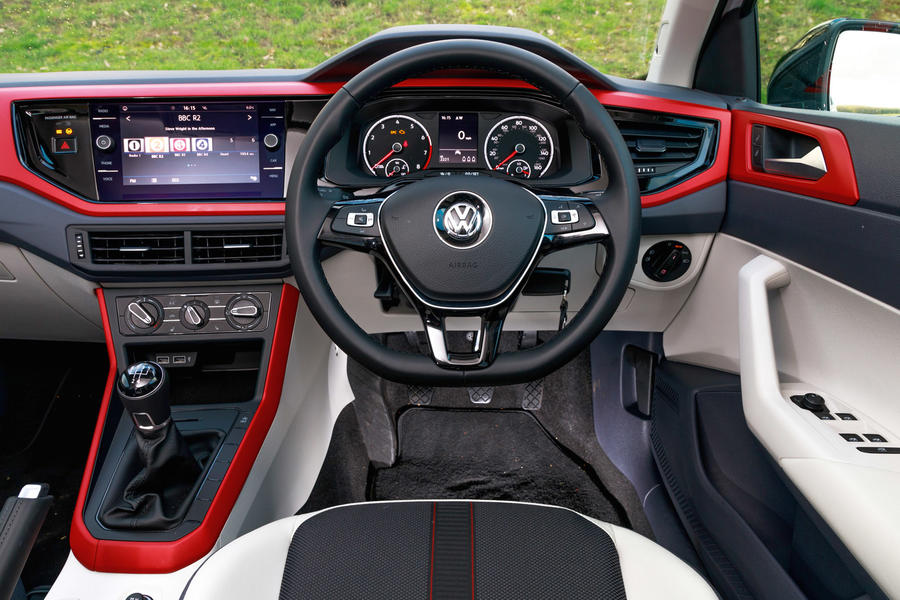
You have to pay extra for the 8.0in Discover Navigation touchscreen infotainment system our test car had, but not for the 16in wheels, the sports seats or the decals. No Beats specification would be complete without an audio upgrade including a subwoofer, of course, and the Polo’s sits in the boot where it prevents you from dropping down the variable floor and eats up a bit of available carrying space, annoyingly. Even so, I’m sure this is exactly how many Polo owners might order their car.
According to our tape measure, there is 70mm more ‘typical leg room’ (we measure it with the front seat set midway for cushion height and for a metre of front leg room) in the VW’s back row than there is in the Renault’s, and significantly more head room offered by either the Renault or the Ford – and if you’re going to carry bigger kids or even smaller adults around, those measurements are enough to make a notable difference in any car this size.
The Polo is also arguably the most comfortable-riding car on test (although such things are a little subjective), and it recorded the best on-test indicated fuel economy. It gives up very little to any other rival in the class on mechanical refinement or drivability and has as much performance as any small car like this really needs with a bit to spare. It isn’t much fun to drive, with slightly softened handling responses and filtered, isolated controls, but it is at least very easy to drive. It looks smart. It’s a VW, so it’s a little bit desirable. That’s plenty to be going on with, isn’t it?
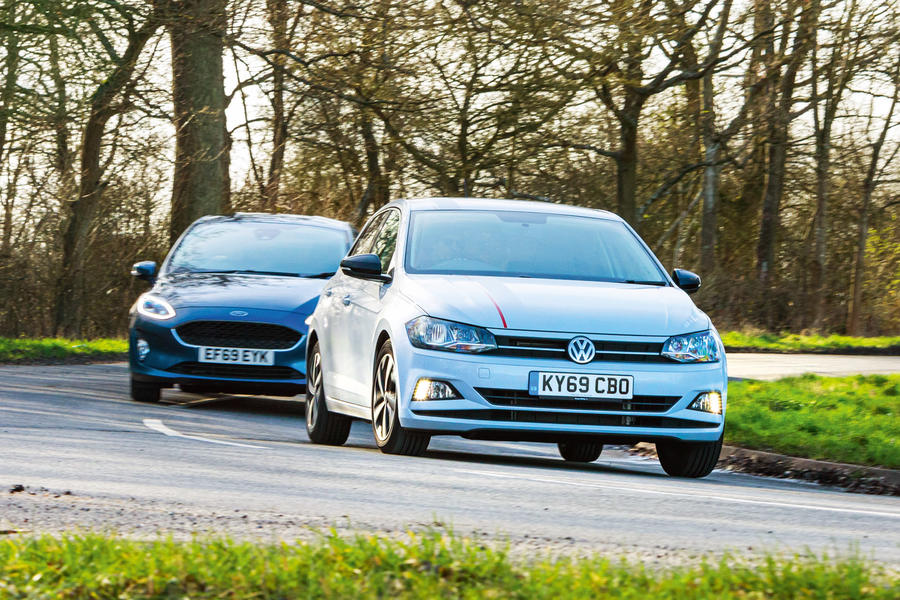
Now to the Fiesta. You’ll have a good idea how this argument’s going to run, too, I bet. And yet I continue to be amazed by how Ford of Europe can manage to make an otherwise very ordinary and modestly priced hatchback that’s built in Cologne so plainly and comprehensively out-handle its competitors. It has been doing so for decades now. The last time there was a duff one (as far as I read at the time), I’d not long started secondary school – and I’m now perilously close to 40. And today, even if you buy pretty much the most ordinary Fiesta going (a car in base-level Trend trim with a few options and with Ford’s much-praised 1.0-litre Ecoboost engine, as tested), you still get something that can dynamically dominate absolutely every rival – even the ones costing several thousand pounds more.
It isn’t that the Fiesta is simply tuned like a little hot hatch, either; it’s just better. There’s a rubbery, insulated feel to the secondary ride, and just a hint of firmness about the car’s vertical compliance – but its damping is so well judged that it makes the overall result entirely comfortable, and it also tells you exactly where Ford chooses to spend its development budget.
There’s greater incisiveness about the way this car changes direction than any rival can muster; lateral body control is tauter too, the level of grip seeming at once higher and better balanced than you’ll find elsewhere – and yet that comes from a modest quartet of 16in alloy wheels wearing economy-biased Continental tyres.
Responsive, linear, supremely metered performance is delivered by the car’s Ecoboost turbocharged triple engine, which feels zesty and keen right up to 5000rpm. It’s matched with a six-speed manual gearbox that sports a lovely short, light, rifle-bolt shift quality, the discovery of which feels like finding a £20 note in the pocket of an old coat.
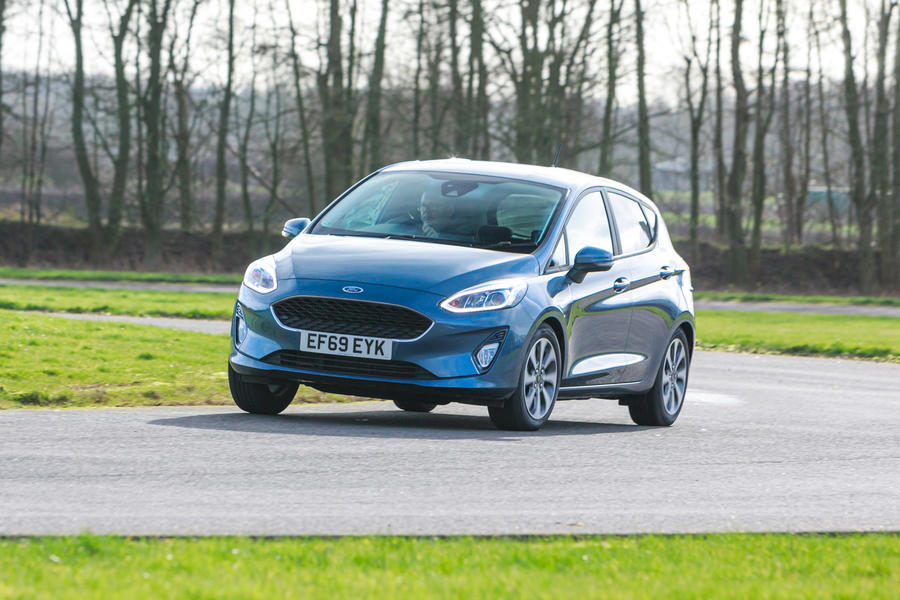
The Fiesta can therefore easily divert you onto a twisty, engaging B-road on any given journey and then light it up with its effortless energy, agility and poise in a way that’s significantly beyond even the next best car here. And yet it has been leaning on that old advantage like a crutch, too hard and for too long, to be competitive across the board. The Fiesta’s driving position isn’t a patch on the Clio’s, and neither is it for cabin quality. It’s mid-table at best for passenger space and only really presents anything close to segment-leading value these days if you determine to pay significantly less than list price (which, to be fair, probably isn’t that hard).
The Fiesta is a pretty functional car conceived for one outstanding selling point, of course, and few would expect the technological and material refinements of the VW – or even the Peugeot we dismissed earlier. Even so, when such all-round accomplishment and completeness is available elsewhere for similar money, you have to recognise that dynamic brilliance alone isn’t enough for the Ford. Not any more.
The Clio is a car you could and would recommend to a style-conscious bargain-hunter without much of a caveat; the Fiesta remains the supermini that a keen driver like you or I will probably continue to default to, for reasons as valid and plain today as ever they have been.
But the Polo is the car you could recommend to anyone. It is at once roomier, plusher, more technology-rich, more pleasant to use and more polished to drive than almost any supermini on the road; and it’s not the plain and boring, overpriced prospect you might expect, either. The Volkswagen Polo is our new supermini class champion, then – and I wonder how many other new pretenders it will see off yet.
READ MORE
Best new small car 2020: part one – Ford Fiesta vs eight rivals
Volkswagen to launch 34 new models in 2020
Volkswagen Up GTI relaunched in UK for 2020
2021 Volkswagen Arteon Shooting Brake spotted undisguised
Source: Autocar
